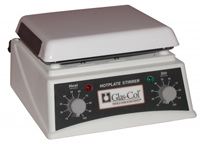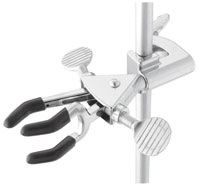| The Home page of ILPI's Safety Data Sheet (SDS) Resource, the leader in SDS information since 1995! | |
| The history and philosophy behind this resource. | |
| A curated collection of books and reference materials concerning Safety Data Sheets and closely related topics. | |
| Paste your plain text SDS into the SDS-Demystifier, and it will be converted into a hypertext-enriched document with links to detailed explanations of each key term. | |
| An extensive list of frequently asked questions about Safety Data Sheets including regulations, content, compliance, and more. | |
| A humorous take on Safety Data Sheet jargon. Fill in the blanks on our entry form to generate a personalized Unsafety Data Sheet to share with your coworkers. | |
| Since 1995, we've maintained this massive curated list of the best places to find Safety Data Sheets on the Internet. | |
| Way more than a glossary, this hypertext-enhanced resource covers hundreds of SDS-related terms and expert knowledge. Each entry includes both the SDS relevance and links to additional authoritative resources. | |
| Archived results of Safety Data Sheet related polls taken by some of our millions of site visitors | |
| You are here! The OSHA regulations behind SDS regulations, including the inspection guidelines and over 400 official interpretations letters under the Hazard Communication Standard | |
| Commercial suppliers of SDS authoring and management software as well as cloud compliance services. | |
| Commercial companies that will create SDS's for your specific needs as well as SDS translation companies. |

Safety signs, banners, and scoreboards? Get yours at Safety Emporium!
| Title: 06/04/2013 - NIST labeling of Small Packages | |
| Record Type: Interpretation | Standard Number: 1910.1200 |
June 4 2013
Dr. Robert L. Watters, Jr.
National Institute of Standards and Technology
100 Bureau Drive, Stop 1070
Gaithersburg, MD 20899
Dear Dr. Watters:
Thank you for your November 15, 2012, email to the Occupational Health and Safety Administration's (OSHA) Directorate of Enforcement Programs. Your questions concerned the labeling requirements regarding the revised Hazard Communication standard (HCS 2012), 29 CFR 1910.1200. This letter constitutes OSHA's interpretation only of the requirements herein, and may not be applicable to any questions not delineated within your original correspondence. Your paraphrased questions and our responses are below.

Safety Emporium has all kinds of lab equipment such as stirring hot plates.
Background: The National Institute of Standards and Technology (NIST) produces nearly 1,300 Standard Reference Materials (SRMs) used to assure the accuracy of customers' measurements. NIST sells approximately 33,000 SRMs per year. Most of these are in small containers. Placing all the required information on a HCS 2012 compliant label1 will present a significant challenge to NIST and other distributors who must label small containers of hazardous chemicals, such as 5 milliliter (mL) vials or 50 mL bottles.
Question 1: Can NIST provide a key (e.g., a numbering system) linking each individual 5 mL vial or 50 mL bottle to an accompanying sheet(s) containing the information required on the HCS 2012 label?
Response: No. Paragraph 1910.1200(f)(1) requires the chemical manufacturer, importer, or distributor to ensure that each container of hazardous chemicals leaving the workplace is labeled, tagged or marked with the following information: (1) a product identifier; (2) signal word; (3) hazard statement(s); (4) pictogram(s); (5) precautionary statement(s); and (6) the name, address, and telephone number of the responsible party. As such, a key or numbering system is not compliant with the HCS 2012 and therefore cannot be used on labels in place of required hazard information for shipped containers.
Question 2: Can NIST apply the same labeling exceptions and exemptions allowed by the Department of Transportation for small quantities and omit the HCS 2012 label from the immediate container and outer packaging?
Response: No, as discussed above, NIST is required to comply with the HCS labeling requirements.
Question 3: Can NIST apply the same exceptions and exemptions allowed under the European Classification, Labelling and Packaging (CLP) regulations?
Response: No. All hazardous chemicals shipped within the United States must comply with the HCS 2012 requirements.
Question 4: If NIST cannot do any of the above labeling options, can we affix the HCS 2012 label on the box containing the ampoules/bottles of the hazardous materials if the ampoules/bottles are too small to have a HCS 2012 label attached?

Hold on to your reaction with laboratory clamps and accessories from Safety Emporium.
Response: No. Ampoules/bottles of the hazardous chemical must be labeled with the hazard information required by HCS 2012. While paragraph 1910.1200(c) defines a label as an appropriate group of written, printed or graphic information elements concerning a hazardous chemical that is affixed to, printed on, or attached to the immediate container of a hazardous chemical, or to the outside packaging,
this is merely the definition of what a label is; it was not intended to allow for the labeling of the outside packaging only. OSHA's position is that labels must be attached to a hazardous chemical's immediate container. Therefore, a manufacturer, importer, or distributor may not attach an HCS 2012 label only to the outside packaging of a shipped hazardous chemical.
OSHA understands your concern that HCS 2012 labels contain more information, which may be difficult to include on small shipped containers. As such, labeling can be done with pull-out labels, fold back labels, tags or other methods. While pull-out labels, fold back labels, tags or other methods to attach the label to the shipped container may cost more than traditional glued on labels, an increase in cost is an unacceptable reason to avoid use of these labeling methods. We are including a recent OSHA letter to [Name Withheld] from April 15, 2013, which discusses how tags may be used to label shipped containers.
As a practical accommodation, where the manufacturer can show that it is not feasible to use pull-out labels, fold back labels, or tags, containing the full HCS 2012 required information, the shipped small container (i.e., the actual container holding the hazardous chemical), at a minimum, must contain the following:
- Product identifier
- Appropriate pictograms
- Manufacturer's name and phone number
- Signal word
- A statement indicating the full label information for the chemical is provided on the outside package.
Additionally, the outside packaging, at a minimum, must comply with the following:
- All the applicable label elements, as defined in 29 CFR 1910.1200(f)(1).
- The outside package must be clearly marked to ensure the complete label elements are visible and it must clearly inform users that the small container must be stored in the outer container bearing the complete label. The complete label must be maintained on the outer package (e.g., not torn, defaced, destroyed).
- The manufacturer must ensure that any alternative labeling used does not conflict with any other standards. As such, the outside packaging must not present a hazard while the material is being stored.

Get your GHS-compliant labels and signs from Safety Emporium.
Example: Category 1 flammable liquid, named High Flam, where the only hazard is the flammability, manufactured by ABC.
- The immediate container would be labeled as follows:
- High Flam,
- Flame Pictogram,
- DANGER,
- Phone # (123) 456-7890,
- Full labeling information for High Flam is provided on the outside package.
- The outside package would contain:
- High Flam,
- Flame Pictogram,
- DANGER,
- Extremely flammable liquid and vapor, all the precautionary statements (e.g., Store in a well-ventilated place. Keep cool. Keep container tightly closed, see Appendix C, subsection C.4.19 for the full list of precautionary statements that must be present for a category 1 flammable liquid.)
- ABC 100 Any Street, Any Town, MA 14569
- Phone # (123) 456-7890.
NOTE: As this is a flammable liquid, the outer packaging MUST not be of a material that is flammable or combustible, 29 CFR 1910.106(d)(2)(i).
OSHA encourages manufacturers, distributors, and importers to add as much information as feasible to the small shipped container labels.
Finally, please note that the December 1, 2015, deadline only applies to distributors. In 29 CFR 1910.1200(c) a distributor is defined as any business, other than a chemical manufacturer or importer, which supplies hazardous chemicals to other distributors or to employers.
Businesses that "produce" chemicals (i.e., manufacture, process, formulate, blend, extract, generate, emit, or repackage chemicals for use or distribution) are considered "chemical manufacturers" under the HCS 2012 and therefore must comply with the HCS 2012 labeling requirements by June 1, 2015. Although your background information describes NIST as a distributor, because NIST "produces" chemicals, NIST would be considered a manufacturer under the HCS 2012 . As such, NIST must comply with all the HCS 2012 labeling requirements by June 1, 2015, and include NIST on safety data sheets (SDS) as the chemical manufacturer.
Thank you for your interest in occupational safety and health. We hope you find this information helpful. OSHA's requirements are set by statute, standards, and regulations. Our letters of interpretation do not create new or additional requirements but rather explain these requirements and how they apply to particular circumstances. This letter constitutes OSHA's interpretation of the requirements discussed. From time to time, letters are affected when the Agency updates a standard, a legal decision impacts a standard, or changes in technology affect the interpretation. To assure that you are using the correct information and guidance, please consult OSHA's website at https://www.osha.gov. If you have further questions, please feel free to contact the Office of Health Enforcement at (202) 693-2190.
Sincerely,
Thomas Galassi, Director
Directorate of Enforcement Programs
Attachment
1 In your email, you mention GHS requirements rather than HCS 2012 requirements. Please note, that the GHS is a non-binding system of hazard communication developed through consensus at the United Nations. As such, only the GHS provisions explicitly adopted by OSHA through the HCS 2012 are enforceable. Thus, labels must comply with the HCS 2012 requirements.
The original official public domain version of this document is available from OSHA at https://www.osha.gov/laws-regs/standardinterpretations/2013-06-04.